Predictive Analytics
Descriptive Analytics
Prescriptive Analytics
Mobile Health Analytics
On-Premise
Cloud-Based
Hybrid
Software
Hardware
Services
Healthcare Providers
Payer Organizations
Pharmaceutical Companies
Research Institutions
North America
Europe
South America
Asia Pacific
Middle East and Africa
North America Outlook (USD Billion, 2019-2035)
North America Healthcare Analytics Market by Application Type
Predictive Analytics
Descriptive Analytics
Prescriptive Analytics
Mobile Health Analytics
North America Healthcare Analytics Market by Deployment Mode Type
On-Premise
Cloud-Based
Hybrid
North America Healthcare Analytics Market by Component Type
Software
Hardware
Services
North America Healthcare Analytics Market by End Use Type
Healthcare Providers
Payer Organizations
Pharmaceutical Companies
Research Institutions
North America Healthcare Analytics Market by Regional Type
US
Canada
US Outlook (USD Billion, 2019-2035)
US Healthcare Analytics Market by Application Type
Predictive Analytics
Descriptive Analytics
Prescriptive Analytics
Mobile Health Analytics
US Healthcare Analytics Market by Deployment Mode Type
On-Premise
Cloud-Based
Hybrid
US Healthcare Analytics Market by Component Type
Software
Hardware
Services
US Healthcare Analytics Market by End Use Type
Healthcare Providers
Payer Organizations
Pharmaceutical Companies
Research Institutions
CANADA Outlook (USD Billion, 2019-2035)
CANADA Healthcare Analytics Market by Application Type
Predictive Analytics
Descriptive Analytics
Prescriptive Analytics
Mobile Health Analytics
CANADA Healthcare Analytics Market by Deployment Mode Type
On-Premise
Cloud-Based
Hybrid
CANADA Healthcare Analytics Market by Component Type
Software
Hardware
Services
CANADA Healthcare Analytics Market by End Use Type
Healthcare Providers
Payer Organizations
Pharmaceutical Companies
Research Institutions
Europe Outlook (USD Billion, 2019-2035)
Europe Healthcare Analytics Market by Application Type
Predictive Analytics
Descriptive Analytics
Prescriptive Analytics
Mobile Health Analytics
Europe Healthcare Analytics Market by Deployment Mode Type
On-Premise
Cloud-Based
Hybrid
Europe Healthcare Analytics Market by Component Type
Software
Hardware
Services
Europe Healthcare Analytics Market by End Use Type
Healthcare Providers
Payer Organizations
Pharmaceutical Companies
Research Institutions
Europe Healthcare Analytics Market by Regional Type
Germany
UK
France
Russia
Italy
Spain
Rest of Europe
GERMANY Outlook (USD Billion, 2019-2035)
GERMANY Healthcare Analytics Market by Application Type
Predictive Analytics
Descriptive Analytics
Prescriptive Analytics
Mobile Health Analytics
GERMANY Healthcare Analytics Market by Deployment Mode Type
On-Premise
Cloud-Based
Hybrid
GERMANY Healthcare Analytics Market by Component Type
Software
Hardware
Services
GERMANY Healthcare Analytics Market by End Use Type
Healthcare Providers
Payer Organizations
Pharmaceutical Companies
Research Institutions
UK Outlook (USD Billion, 2019-2035)
UK Healthcare Analytics Market by Application Type
Predictive Analytics
Descriptive Analytics
Prescriptive Analytics
Mobile Health Analytics
UK Healthcare Analytics Market by Deployment Mode Type
On-Premise
Cloud-Based
Hybrid
UK Healthcare Analytics Market by Component Type
Software
Hardware
Services
UK Healthcare Analytics Market by End Use Type
Healthcare Providers
Payer Organizations
Pharmaceutical Companies
Research Institutions
FRANCE Outlook (USD Billion, 2019-2035)
FRANCE Healthcare Analytics Market by Application Type
Predictive Analytics
Descriptive Analytics
Prescriptive Analytics
Mobile Health Analytics
FRANCE Healthcare Analytics Market by Deployment Mode Type
On-Premise
Cloud-Based
Hybrid
FRANCE Healthcare Analytics Market by Component Type
Software
Hardware
Services
FRANCE Healthcare Analytics Market by End Use Type
Healthcare Providers
Payer Organizations
Pharmaceutical Companies
Research Institutions
RUSSIA Outlook (USD Billion, 2019-2035)
RUSSIA Healthcare Analytics Market by Application Type
Predictive Analytics
Descriptive Analytics
Prescriptive Analytics
Mobile Health Analytics
RUSSIA Healthcare Analytics Market by Deployment Mode Type
On-Premise
Cloud-Based
Hybrid
RUSSIA Healthcare Analytics Market by Component Type
Software
Hardware
Services
RUSSIA Healthcare Analytics Market by End Use Type
Healthcare Providers
Payer Organizations
Pharmaceutical Companies
Research Institutions
ITALY Outlook (USD Billion, 2019-2035)
ITALY Healthcare Analytics Market by Application Type
Predictive Analytics
Descriptive Analytics
Prescriptive Analytics
Mobile Health Analytics
ITALY Healthcare Analytics Market by Deployment Mode Type
On-Premise
Cloud-Based
Hybrid
ITALY Healthcare Analytics Market by Component Type
Software
Hardware
Services
ITALY Healthcare Analytics Market by End Use Type
Healthcare Providers
Payer Organizations
Pharmaceutical Companies
Research Institutions
SPAIN Outlook (USD Billion, 2019-2035)
SPAIN Healthcare Analytics Market by Application Type
Predictive Analytics
Descriptive Analytics
Prescriptive Analytics
Mobile Health Analytics
SPAIN Healthcare Analytics Market by Deployment Mode Type
On-Premise
Cloud-Based
Hybrid
SPAIN Healthcare Analytics Market by Component Type
Software
Hardware
Services
SPAIN Healthcare Analytics Market by End Use Type
Healthcare Providers
Payer Organizations
Pharmaceutical Companies
Research Institutions
REST OF EUROPE Outlook (USD Billion, 2019-2035)
REST OF EUROPE Healthcare Analytics Market by Application Type
Predictive Analytics
Descriptive Analytics
Prescriptive Analytics
Mobile Health Analytics
REST OF EUROPE Healthcare Analytics Market by Deployment Mode Type
On-Premise
Cloud-Based
Hybrid
REST OF EUROPE Healthcare Analytics Market by Component Type
Software
Hardware
Services
REST OF EUROPE Healthcare Analytics Market by End Use Type
Healthcare Providers
Payer Organizations
Pharmaceutical Companies
Research Institutions
APAC Outlook (USD Billion, 2019-2035)
APAC Healthcare Analytics Market by Application Type
Predictive Analytics
Descriptive Analytics
Prescriptive Analytics
Mobile Health Analytics
APAC Healthcare Analytics Market by Deployment Mode Type
On-Premise
Cloud-Based
Hybrid
APAC Healthcare Analytics Market by Component Type
Software
Hardware
Services
APAC Healthcare Analytics Market by End Use Type
Healthcare Providers
Payer Organizations
Pharmaceutical Companies
Research Institutions
APAC Healthcare Analytics Market by Regional Type
China
India
Japan
South Korea
Malaysia
Thailand
Indonesia
Rest of APAC
CHINA Outlook (USD Billion, 2019-2035)
CHINA Healthcare Analytics Market by Application Type
Predictive Analytics
Descriptive Analytics
Prescriptive Analytics
Mobile Health Analytics
CHINA Healthcare Analytics Market by Deployment Mode Type
On-Premise
Cloud-Based
Hybrid
CHINA Healthcare Analytics Market by Component Type
Software
Hardware
Services
CHINA Healthcare Analytics Market by End Use Type
Healthcare Providers
Payer Organizations
Pharmaceutical Companies
Research Institutions
INDIA Outlook (USD Billion, 2019-2035)
INDIA Healthcare Analytics Market by Application Type
Predictive Analytics
Descriptive Analytics
Prescriptive Analytics
Mobile Health Analytics
INDIA Healthcare Analytics Market by Deployment Mode Type
On-Premise
Cloud-Based
Hybrid
INDIA Healthcare Analytics Market by Component Type
Software
Hardware
Services
INDIA Healthcare Analytics Market by End Use Type
Healthcare Providers
Payer Organizations
Pharmaceutical Companies
Research Institutions
JAPAN Outlook (USD Billion, 2019-2035)
JAPAN Healthcare Analytics Market by Application Type
Predictive Analytics
Descriptive Analytics
Prescriptive Analytics
Mobile Health Analytics
JAPAN Healthcare Analytics Market by Deployment Mode Type
On-Premise
Cloud-Based
Hybrid
JAPAN Healthcare Analytics Market by Component Type
Software
Hardware
Services
JAPAN Healthcare Analytics Market by End Use Type
Healthcare Providers
Payer Organizations
Pharmaceutical Companies
Research Institutions
SOUTH KOREA Outlook (USD Billion, 2019-2035)
SOUTH KOREA Healthcare Analytics Market by Application Type
Predictive Analytics
Descriptive Analytics
Prescriptive Analytics
Mobile Health Analytics
SOUTH KOREA Healthcare Analytics Market by Deployment Mode Type
On-Premise
Cloud-Based
Hybrid
SOUTH KOREA Healthcare Analytics Market by Component Type
Software
Hardware
Services
SOUTH KOREA Healthcare Analytics Market by End Use Type
Healthcare Providers
Payer Organizations
Pharmaceutical Companies
Research Institutions
MALAYSIA Outlook (USD Billion, 2019-2035)
MALAYSIA Healthcare Analytics Market by Application Type
Predictive Analytics
Descriptive Analytics
Prescriptive Analytics
Mobile Health Analytics
MALAYSIA Healthcare Analytics Market by Deployment Mode Type
On-Premise
Cloud-Based
Hybrid
MALAYSIA Healthcare Analytics Market by Component Type
Software
Hardware
Services
MALAYSIA Healthcare Analytics Market by End Use Type
Healthcare Providers
Payer Organizations
Pharmaceutical Companies
Research Institutions
THAILAND Outlook (USD Billion, 2019-2035)
THAILAND Healthcare Analytics Market by Application Type
Predictive Analytics
Descriptive Analytics
Prescriptive Analytics
Mobile Health Analytics
THAILAND Healthcare Analytics Market by Deployment Mode Type
On-Premise
Cloud-Based
Hybrid
THAILAND Healthcare Analytics Market by Component Type
Software
Hardware
Services
THAILAND Healthcare Analytics Market by End Use Type
Healthcare Providers
Payer Organizations
Pharmaceutical Companies
Research Institutions
INDONESIA Outlook (USD Billion, 2019-2035)
INDONESIA Healthcare Analytics Market by Application Type
Predictive Analytics
Descriptive Analytics
Prescriptive Analytics
Mobile Health Analytics
INDONESIA Healthcare Analytics Market by Deployment Mode Type
On-Premise
Cloud-Based
Hybrid
INDONESIA Healthcare Analytics Market by Component Type
Software
Hardware
Services
INDONESIA Healthcare Analytics Market by End Use Type
Healthcare Providers
Payer Organizations
Pharmaceutical Companies
Research Institutions
REST OF APAC Outlook (USD Billion, 2019-2035)
REST OF APAC Healthcare Analytics Market by Application Type
Predictive Analytics
Descriptive Analytics
Prescriptive Analytics
Mobile Health Analytics
REST OF APAC Healthcare Analytics Market by Deployment Mode Type
On-Premise
Cloud-Based
Hybrid
REST OF APAC Healthcare Analytics Market by Component Type
Software
Hardware
Services
REST OF APAC Healthcare Analytics Market by End Use Type
Healthcare Providers
Payer Organizations
Pharmaceutical Companies
Research Institutions
South America Outlook (USD Billion, 2019-2035)
South America Healthcare Analytics Market by Application Type
Predictive Analytics
Descriptive Analytics
Prescriptive Analytics
Mobile Health Analytics
South America Healthcare Analytics Market by Deployment Mode Type
On-Premise
Cloud-Based
Hybrid
South America Healthcare Analytics Market by Component Type
Software
Hardware
Services
South America Healthcare Analytics Market by End Use Type
Healthcare Providers
Payer Organizations
Pharmaceutical Companies
Research Institutions
South America Healthcare Analytics Market by Regional Type
Brazil
Mexico
Argentina
Rest of South America
BRAZIL Outlook (USD Billion, 2019-2035)
BRAZIL Healthcare Analytics Market by Application Type
Predictive Analytics
Descriptive Analytics
Prescriptive Analytics
Mobile Health Analytics
BRAZIL Healthcare Analytics Market by Deployment Mode Type
On-Premise
Cloud-Based
Hybrid
BRAZIL Healthcare Analytics Market by Component Type
Software
Hardware
Services
BRAZIL Healthcare Analytics Market by End Use Type
Healthcare Providers
Payer Organizations
Pharmaceutical Companies
Research Institutions
MEXICO Outlook (USD Billion, 2019-2035)
MEXICO Healthcare Analytics Market by Application Type
Predictive Analytics
Descriptive Analytics
Prescriptive Analytics
Mobile Health Analytics
MEXICO Healthcare Analytics Market by Deployment Mode Type
On-Premise
Cloud-Based
Hybrid
MEXICO Healthcare Analytics Market by Component Type
Software
Hardware
Services
MEXICO Healthcare Analytics Market by End Use Type
Healthcare Providers
Payer Organizations
Pharmaceutical Companies
Research Institutions
ARGENTINA Outlook (USD Billion, 2019-2035)
ARGENTINA Healthcare Analytics Market by Application Type
Predictive Analytics
Descriptive Analytics
Prescriptive Analytics
Mobile Health Analytics
ARGENTINA Healthcare Analytics Market by Deployment Mode Type
On-Premise
Cloud-Based
Hybrid
ARGENTINA Healthcare Analytics Market by Component Type
Software
Hardware
Services
ARGENTINA Healthcare Analytics Market by End Use Type
Healthcare Providers
Payer Organizations
Pharmaceutical Companies
Research Institutions
REST OF SOUTH AMERICA Outlook (USD Billion, 2019-2035)
REST OF SOUTH AMERICA Healthcare Analytics Market by Application Type
Predictive Analytics
Descriptive Analytics
Prescriptive Analytics
Mobile Health Analytics
REST OF SOUTH AMERICA Healthcare Analytics Market by Deployment Mode Type
On-Premise
Cloud-Based
Hybrid
REST OF SOUTH AMERICA Healthcare Analytics Market by Component Type
Software
Hardware
Services
REST OF SOUTH AMERICA Healthcare Analytics Market by End Use Type
Healthcare Providers
Payer Organizations
Pharmaceutical Companies
Research Institutions
MEA Outlook (USD Billion, 2019-2035)
MEA Healthcare Analytics Market by Application Type
Predictive Analytics
Descriptive Analytics
Prescriptive Analytics
Mobile Health Analytics
MEA Healthcare Analytics Market by Deployment Mode Type
On-Premise
Cloud-Based
Hybrid
MEA Healthcare Analytics Market by Component Type
Software
Hardware
Services
MEA Healthcare Analytics Market by End Use Type
Healthcare Providers
Payer Organizations
Pharmaceutical Companies
Research Institutions
MEA Healthcare Analytics Market by Regional Type
GCC Countries
South Africa
Rest of MEA
GCC COUNTRIES Outlook (USD Billion, 2019-2035)
GCC COUNTRIES Healthcare Analytics Market by Application Type
Predictive Analytics
Descriptive Analytics
Prescriptive Analytics
Mobile Health Analytics
GCC COUNTRIES Healthcare Analytics Market by Deployment Mode Type
On-Premise
Cloud-Based
Hybrid
GCC COUNTRIES Healthcare Analytics Market by Component Type
Software
Hardware
Services
GCC COUNTRIES Healthcare Analytics Market by End Use Type
Healthcare Providers
Payer Organizations
Pharmaceutical Companies
Research Institutions
SOUTH AFRICA Outlook (USD Billion, 2019-2035)
SOUTH AFRICA Healthcare Analytics Market by Application Type
Predictive Analytics
Descriptive Analytics
Prescriptive Analytics
Mobile Health Analytics
SOUTH AFRICA Healthcare Analytics Market by Deployment Mode Type
On-Premise
Cloud-Based
Hybrid
SOUTH AFRICA Healthcare Analytics Market by Component Type
Software
Hardware
Services
SOUTH AFRICA Healthcare Analytics Market by End Use Type
Healthcare Providers
Payer Organizations
Pharmaceutical Companies
Research Institutions
REST OF MEA Outlook (USD Billion, 2019-2035)
REST OF MEA Healthcare Analytics Market by Application Type
Predictive Analytics
Descriptive Analytics
Prescriptive Analytics
Mobile Health Analytics
REST OF MEA Healthcare Analytics Market by Deployment Mode Type
On-Premise
Cloud-Based
Hybrid
REST OF MEA Healthcare Analytics Market by Component Type
Software
Hardware
Services
REST OF MEA Healthcare Analytics Market by End Use Type
Healthcare Providers
Payer Organizations
Pharmaceutical Companies
Research Institutions
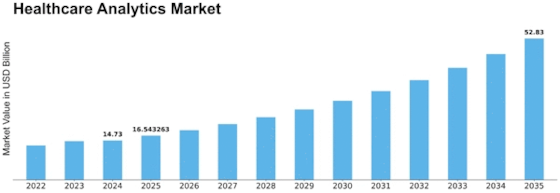

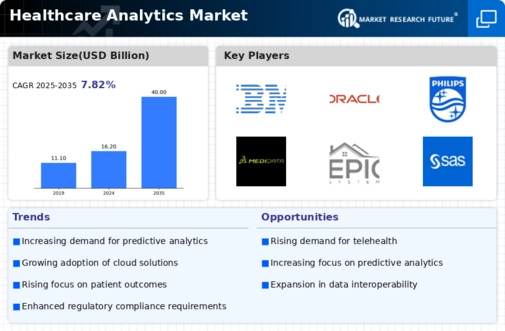
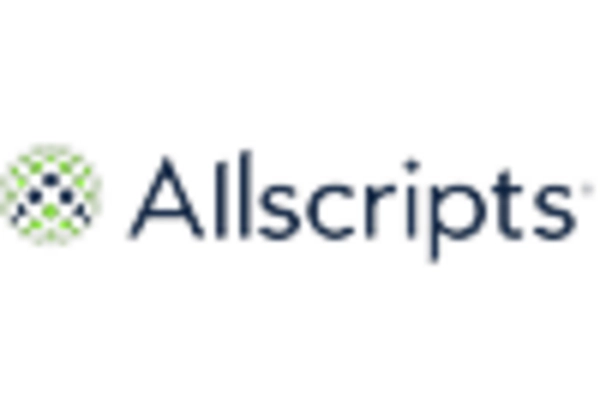
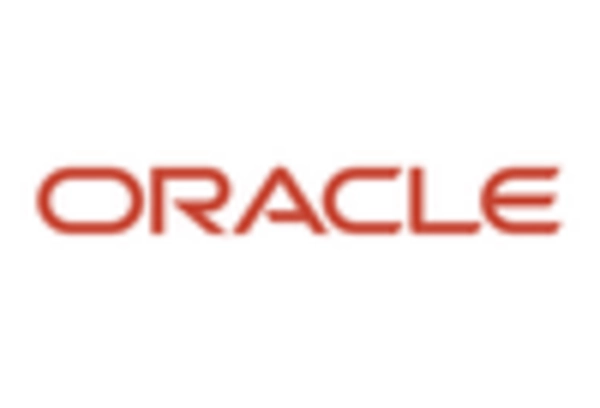

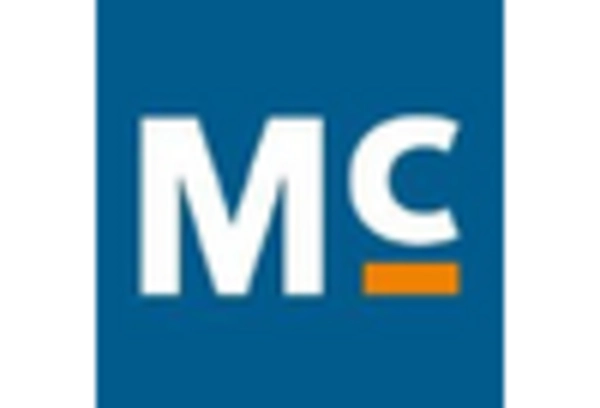
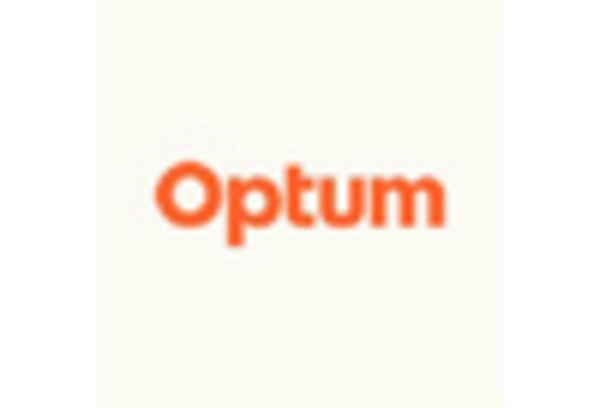










Leave a Comment